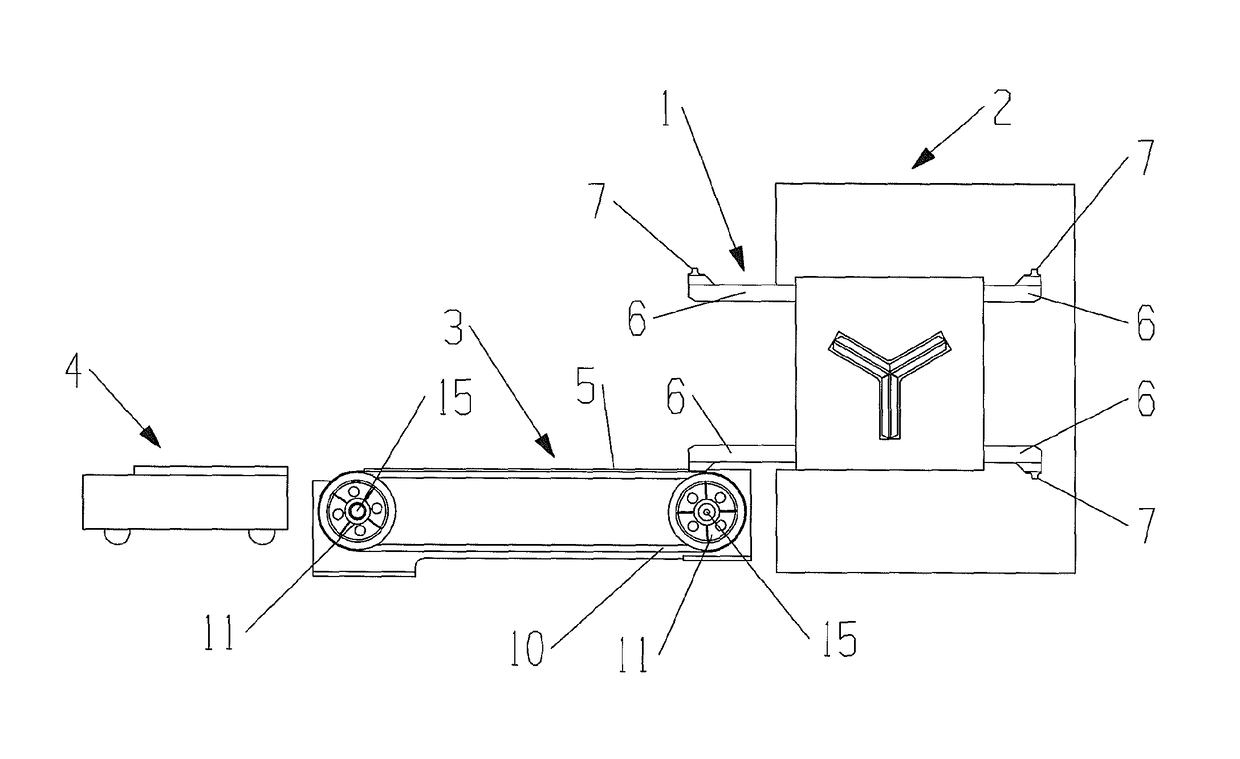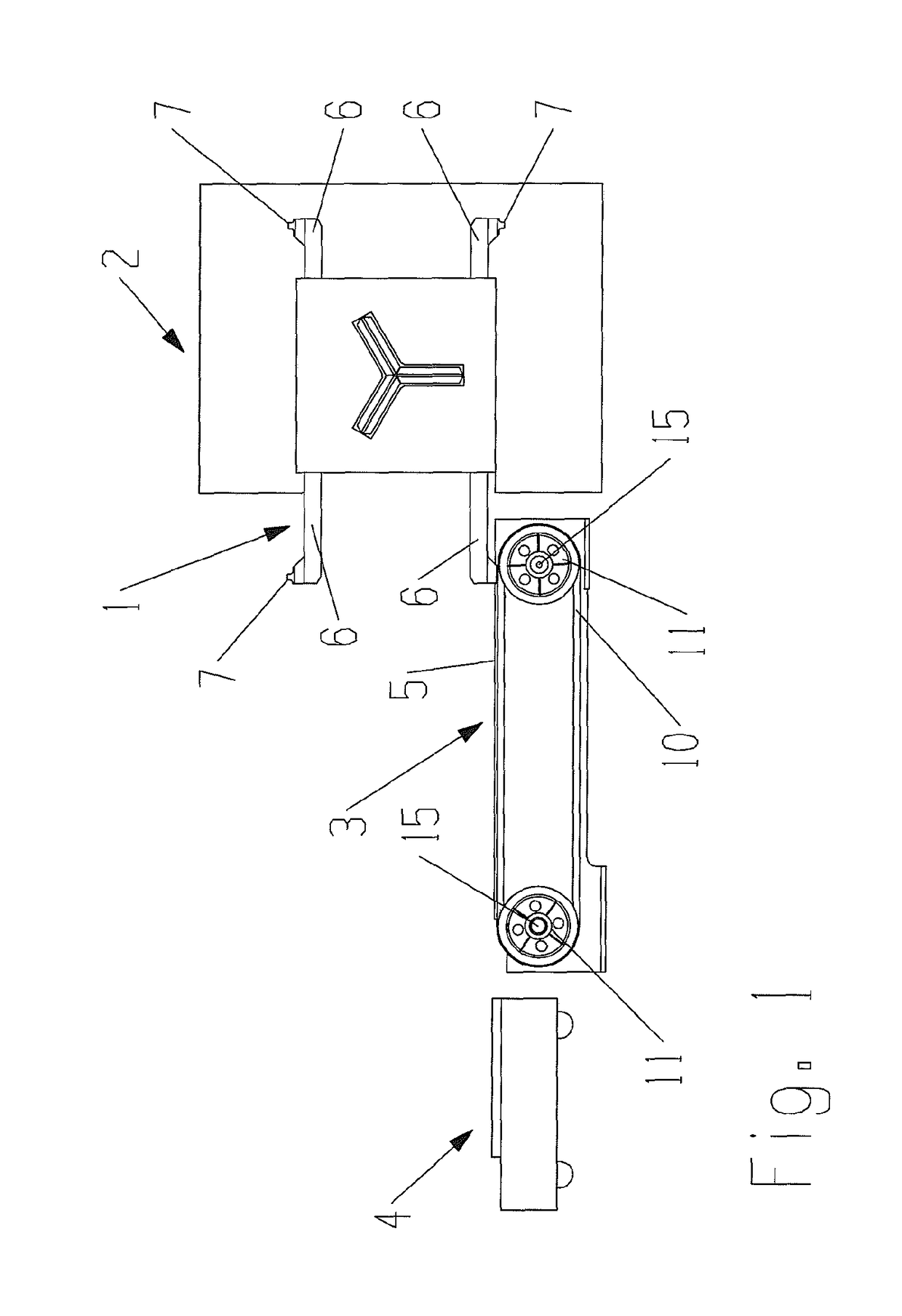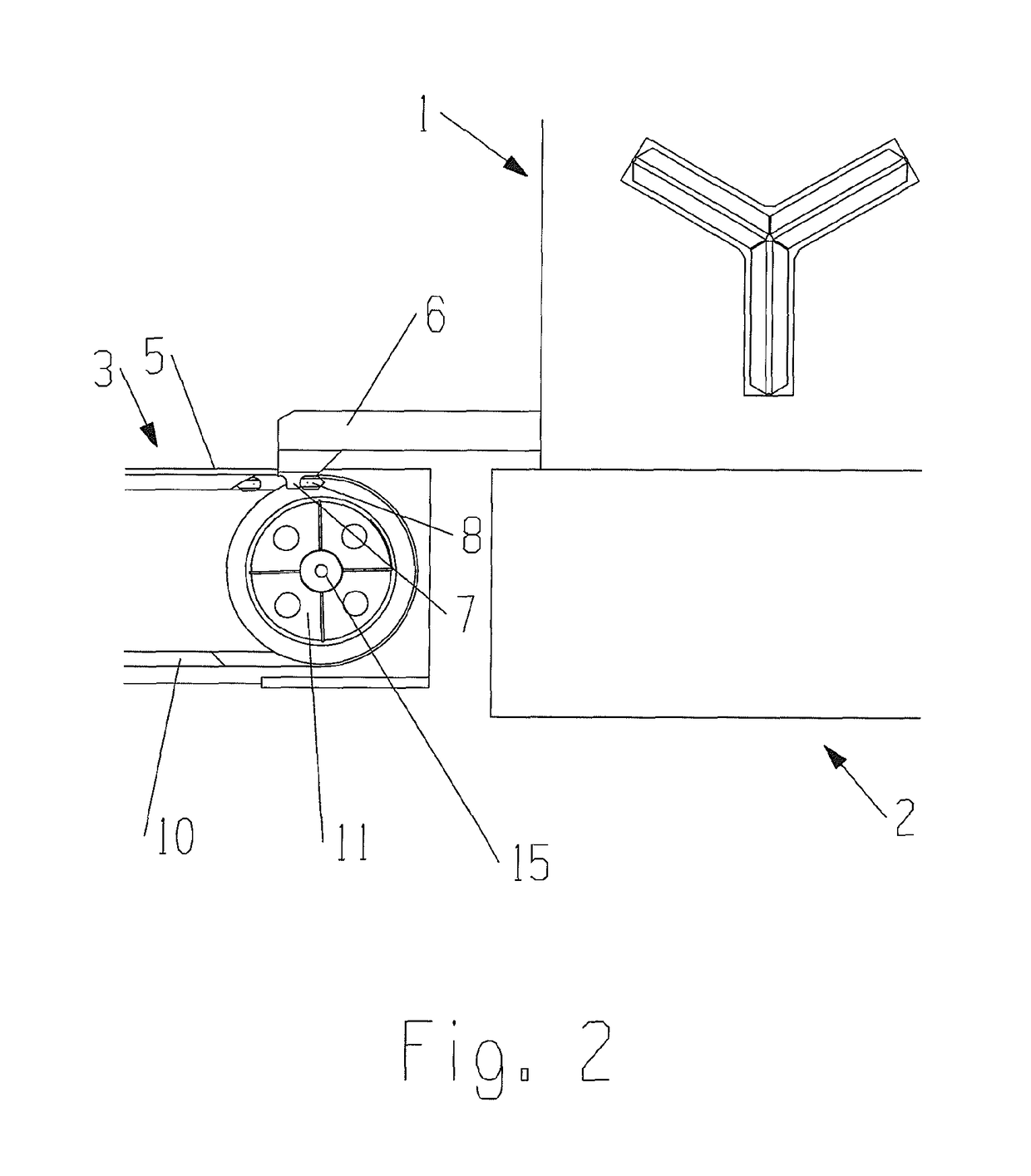Roll stand changing device
a technology of changing device and roll stand, which is applied in the field of rolling mills, can solve the problems of inability to pull individual roll stand, inaccessible rolling line, and high design cost, and achieve the effect of changing individual roll stand in a short amount of tim
- Summary
- Abstract
- Description
- Claims
- Application Information
AI Technical Summary
Benefits of technology
Problems solved by technology
Method used
Image
Examples
Embodiment Construction
[0023]The core idea of the invention is to provide at least one carrier element, which is moved along a predetermined curved path by means of a conveying element. The curved path has at least one non-linear (non-translational) section, along which the carrier element is moved along a curve, and thus, not along a linear path.
[0024]The carrier element performs a predetermined movement that is imparted thereto by the conveying element, which movement makes it possible to quickly connect to and disconnect from the entrainment element of the roll stand, for example. In particular, the movement of the carrier element along the curved path may be configured in such a way that it includes a reciprocating motion transverse to the rolling line, and is combined with a movement along a curve, for example with a lowering and / or raising movement. The reciprocating motion may be a pure translational movement, which may be followed by the curved movement, for example a lowering and / or raising movem...
PUM
| Property | Measurement | Unit |
|---|---|---|
| angle | aaaaa | aaaaa |
| angle | aaaaa | aaaaa |
| angle | aaaaa | aaaaa |
Abstract
Description
Claims
Application Information
 Login to View More
Login to View More - R&D
- Intellectual Property
- Life Sciences
- Materials
- Tech Scout
- Unparalleled Data Quality
- Higher Quality Content
- 60% Fewer Hallucinations
Browse by: Latest US Patents, China's latest patents, Technical Efficacy Thesaurus, Application Domain, Technology Topic, Popular Technical Reports.
© 2025 PatSnap. All rights reserved.Legal|Privacy policy|Modern Slavery Act Transparency Statement|Sitemap|About US| Contact US: help@patsnap.com



